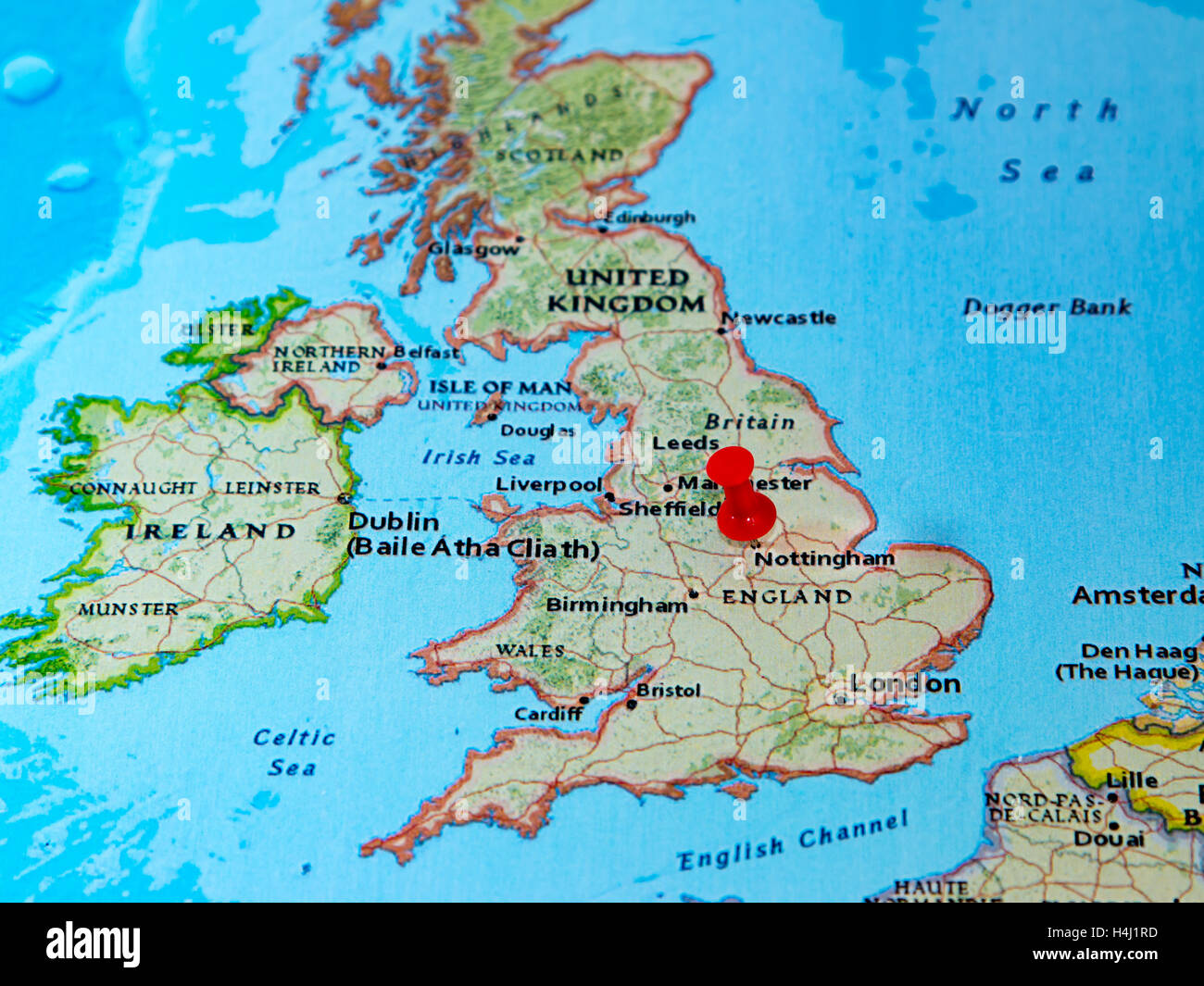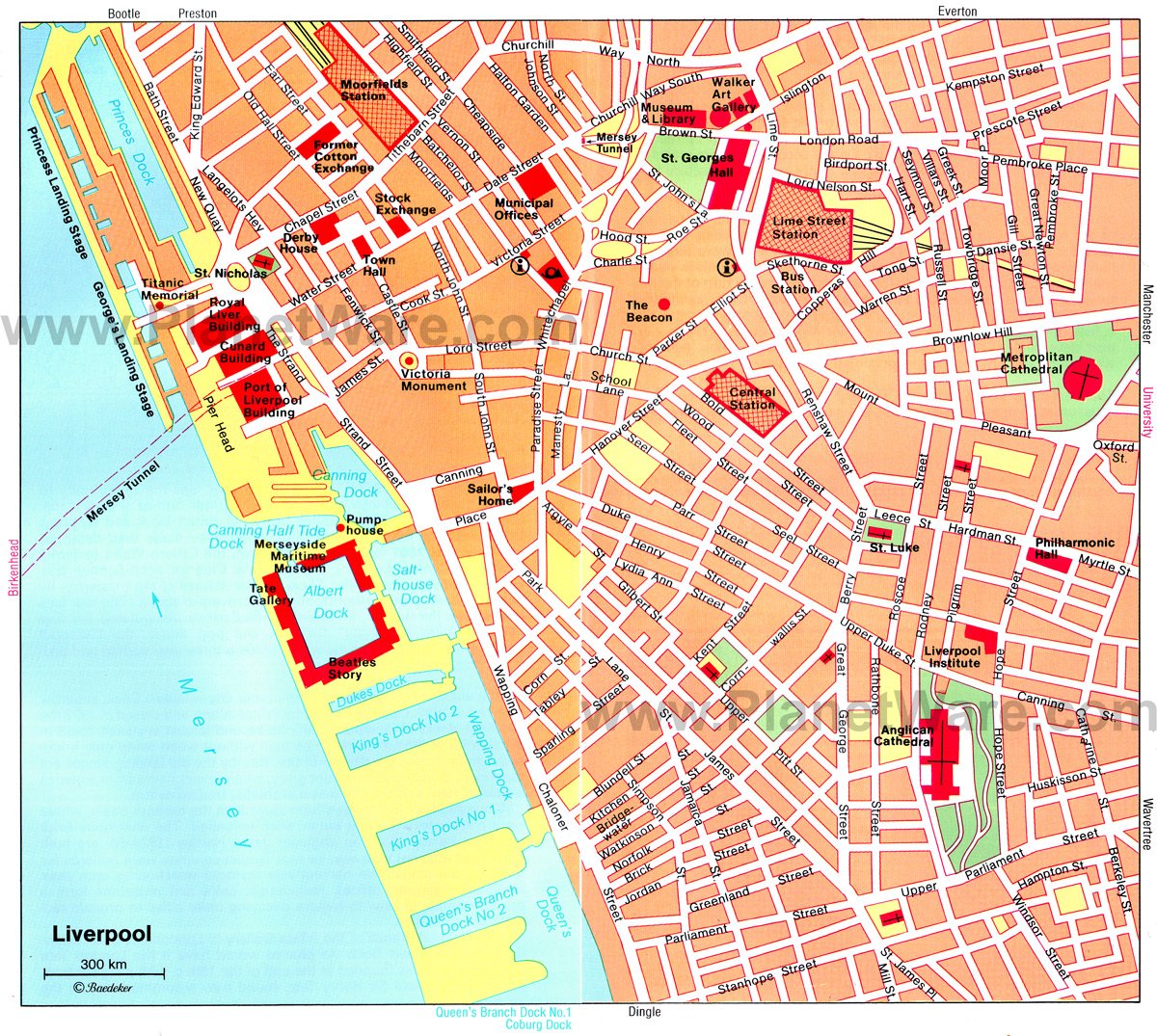Liverpool on map sits proudly on the northwest coast of England, a vibrant city with a rich maritime history and a captivating cultural scene. This guide delves into the geographical heart of Liverpool, exploring its neighborhoods, iconic landmarks, and extensive transportation network. From the historic docks to its modern urban sprawl, we uncover what makes this city a must-visit destination.
We’ll navigate Liverpool’s diverse districts, from the bustling city center to the quieter residential areas, highlighting key points of interest and providing insights into the city’s unique character. Our exploration will also cover accessibility, outlining how to reach Liverpool and navigate its public transport system. Prepare for an in-depth journey into the heart of this dynamic British city.
Liverpool’s Geographical Context
Liverpool, a vibrant port city on the northwest coast of England, holds a significant place in British history and geography. Its strategic location has shaped its development and continues to influence its economic and cultural landscape. This section delves into the city’s geographical coordinates, its relationship to other major UK cities, and its proximity to vital waterways.
Obtain direct knowledge about the efficiency of kids liverpool kit through case studies.
Geographical Coordinates and Regional Positioning
Liverpool is situated at approximately 53.4° N latitude and 2.98° W longitude. This places it in the northwest of England, a region characterized by its dramatic coastline and proximity to the Irish Sea. Relative to other major UK cities, Liverpool lies roughly halfway between London and Edinburgh, significantly closer to Manchester and further from cities such as Birmingham or Cardiff.
Its location within the northwest of England positions it strategically for trade and travel across the Irish Sea.
| Geographical Data | Description |
|---|---|
| Approximate Coordinates: 53.4° N, 2.98° W | This places Liverpool in the northwest of England, on the coast of the Irish Sea. |
| Distance to Manchester: ~35 miles | Liverpool enjoys close proximity to other major cities in the North West. |
| Distance to London: ~200 miles | Relatively far from the capital, highlighting its distinct regional identity. |
| Proximity to the Irish Sea | Liverpool’s port is vital to its history and economy. |
Liverpool’s Proximity to Major Waterways, Liverpool on map
Liverpool’s location on the River Mersey and its proximity to the Irish Sea are defining features. The River Mersey, a significant estuary, has served as the city’s lifeline, facilitating trade and maritime activity for centuries. This access to deep-water ports has been crucial to Liverpool’s growth as a major trading hub. The Irish Sea provides further connections to Ireland and other parts of the British Isles.
Liverpool’s Neighborhoods and Districts
Liverpool is composed of diverse neighborhoods and districts, each with its own unique character, history, and architectural style. These areas reflect the city’s rich past and its ongoing evolution. The following sections explore some of Liverpool’s most prominent areas.
Key Neighborhoods and Their Characteristics

- City Centre: The bustling heart of Liverpool, characterized by its modern architecture, shopping districts, and vibrant nightlife.
- Albert Dock: A UNESCO World Heritage site, renowned for its stunning Georgian architecture and historical significance as a former warehouse district.
- Liverpool Waterfront: A revitalized area encompassing the Albert Dock, offering stunning views, museums, and leisure facilities.
- Sefton Park: A large Victorian park, providing green space and recreational opportunities in the south of the city.
- Toxteth: A historically significant area with a diverse population and a rich cultural heritage.
- Anfield: Home to Liverpool Football Club’s Anfield Stadium, this area is known for its strong community spirit and passionate football fans.
- Kensington: A residential area with a mix of housing types and a lively local atmosphere.
- Wavertree: A predominantly residential area with a more suburban feel, located to the south of the city centre.
- Everton: Historically a working-class area, Everton is known for its strong community identity and is home to Goodison Park, the home of Everton Football Club.
- Bold Street: A vibrant street known for its independent shops, cafes, and bohemian atmosphere.
Comparative Analysis of Liverpool Neighborhoods
| Neighborhood Name | Key Features | Notable Landmarks | Average Property Prices (Illustrative) |
|---|---|---|---|
| City Centre | Modern architecture, shopping, nightlife | Liverpool One shopping complex, St. George’s Hall | High |
| Albert Dock | Georgian architecture, UNESCO World Heritage site | Royal Albert Dock, Tate Liverpool | Very High |
| Anfield | Residential, strong community spirit, Anfield Stadium | Anfield Stadium | Mid-range to High |
Points of Interest in Liverpool
Liverpool boasts a rich tapestry of historical sites, architectural marvels, and cultural attractions. From its iconic waterfront to its grand museums, the city offers a diverse range of experiences for visitors.
Significant Points of Interest
- The Royal Albert Dock: A UNESCO World Heritage site, showcasing stunning Georgian architecture and a rich maritime history. The dock’s intricate brickwork, warehouses converted into museums and shops, and its position on the waterfront create a visually stunning and historically significant location.
- Liverpool Cathedral: An imposing Anglican cathedral, renowned for its impressive architecture and spiritual significance. Its soaring heights and intricate details are a testament to the city’s ambition and architectural prowess.
- St. George’s Hall: A magnificent neoclassical building, serving as a concert hall and courthouse. Its impressive facade, grand interior, and historical context make it a must-see for any visitor.
- Tate Liverpool: A renowned art gallery showcasing modern and contemporary art. Its location on the Albert Dock enhances its appeal, offering a blend of art and architectural beauty.
- The Beatles Story: A museum dedicated to the legendary Beatles, tracing their journey from Liverpool’s Cavern Club to global stardom. This museum offers a fascinating insight into the band’s history and cultural impact.
- Anfield Stadium: The home of Liverpool Football Club, a significant landmark for football fans worldwide. The stadium’s atmosphere and history make it a captivating place to visit, even for non-football fans.
- Walker Art Gallery: A renowned art gallery housing a significant collection of Pre-Raphaelite paintings and other works of art. Its extensive collection and elegant setting offer a rewarding experience for art lovers.
- The Cavern Club: A legendary music venue, where the Beatles honed their skills in the early years of their career. This intimate club holds a significant place in music history.
- Sefton Park: A large Victorian park, offering a tranquil escape from the city’s bustle. Its beautiful landscaping, lakes, and Palm House create a picturesque setting for relaxation and recreation.
- British Music Experience: A museum celebrating British music history, showcasing iconic instruments, costumes, and memorabilia. This museum provides a dynamic and interactive exploration of British music’s rich heritage.
Liverpool’s Transportation Infrastructure: Liverpool On Map
Liverpool’s transportation network plays a vital role in connecting its residents and visitors to various parts of the city and beyond. The city offers a range of options, from public transport to road networks, facilitating efficient movement within and outside the city limits.
Public Transportation and Road Accessibility
.jpg)
Liverpool has a comprehensive public transportation system, including buses, trains, and ferries. Merseyrail, the local train network, connects various parts of the city and its surrounding areas. Numerous bus routes crisscross the city, providing access to most neighborhoods. Liverpool is also easily accessible via major roads and motorways, such as the M57, M58, and M62, connecting it to other parts of the UK.
Compared to a city like London, Liverpool’s transportation system is less extensive, but generally efficient for its size. London’s Underground network, for example, offers a much more comprehensive and faster system, but Liverpool’s system is well-suited to the city’s scale and layout.
| Transportation Hub | Description |
|---|---|
| Lime Street Station | Major train station serving Liverpool and beyond. |
| Liverpool John Lennon Airport | Serves domestic and some international flights. |
| Mersey Ferries | Offer scenic crossings of the River Mersey. |
| Various Bus Stations | Extensive bus network covering the city and surrounding areas. |
Liverpool’s Surroundings and Accessibility
Liverpool’s location offers easy access to stunning countryside and other parts of the UK and internationally. Its surroundings are diverse, ranging from coastal areas to rolling hills, offering a variety of experiences for both residents and visitors.
Surrounding Areas and Accessibility
The surrounding areas of Liverpool encompass the Wirral Peninsula across the Mersey, the rolling hills of the Cheshire countryside, and the dramatic coastline of North Wales. These areas offer scenic drives, walking trails, and opportunities for exploring the natural beauty of the region. Reaching Liverpool from other parts of the UK is straightforward, with excellent rail connections from major cities and motorways providing access for those traveling by car.
International access is primarily through Liverpool John Lennon Airport, with flights connecting to various European destinations. Travelers can utilize trains, buses, planes, and ferries to reach Liverpool from different locations, both within the UK and internationally.
Imagine a panorama: The River Mersey winds its way through the city, its waters reflecting the cityscape. Across the river, the Wirral Peninsula stretches out, its coastline dotted with charming towns and villages. To the east, the Cheshire Plain unfolds, a landscape of rolling hills and farmland. To the north, the mountains of North Wales rise majestically in the distance, a breathtaking backdrop to the city’s bustling activity.
Liverpool, as revealed through this exploration, is more than just a location on a map; it’s a city brimming with history, culture, and vibrant life. From its iconic architecture to its bustling port, Liverpool offers a unique blend of old and new, attracting visitors and residents alike. Its strategic location and well-developed infrastructure ensure easy access, making it a compelling destination for exploration and discovery.

